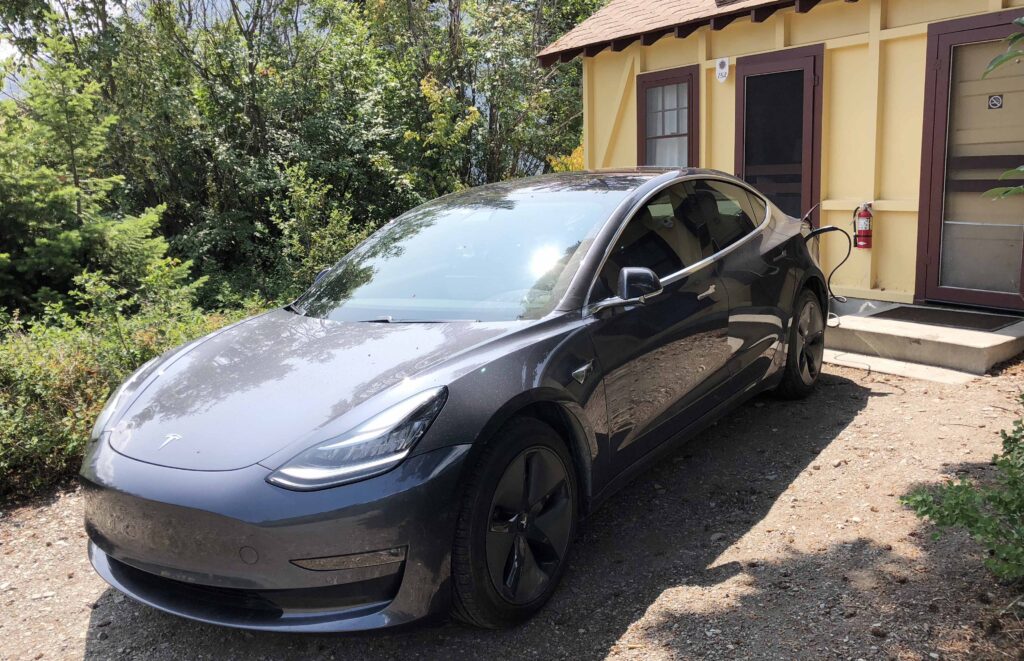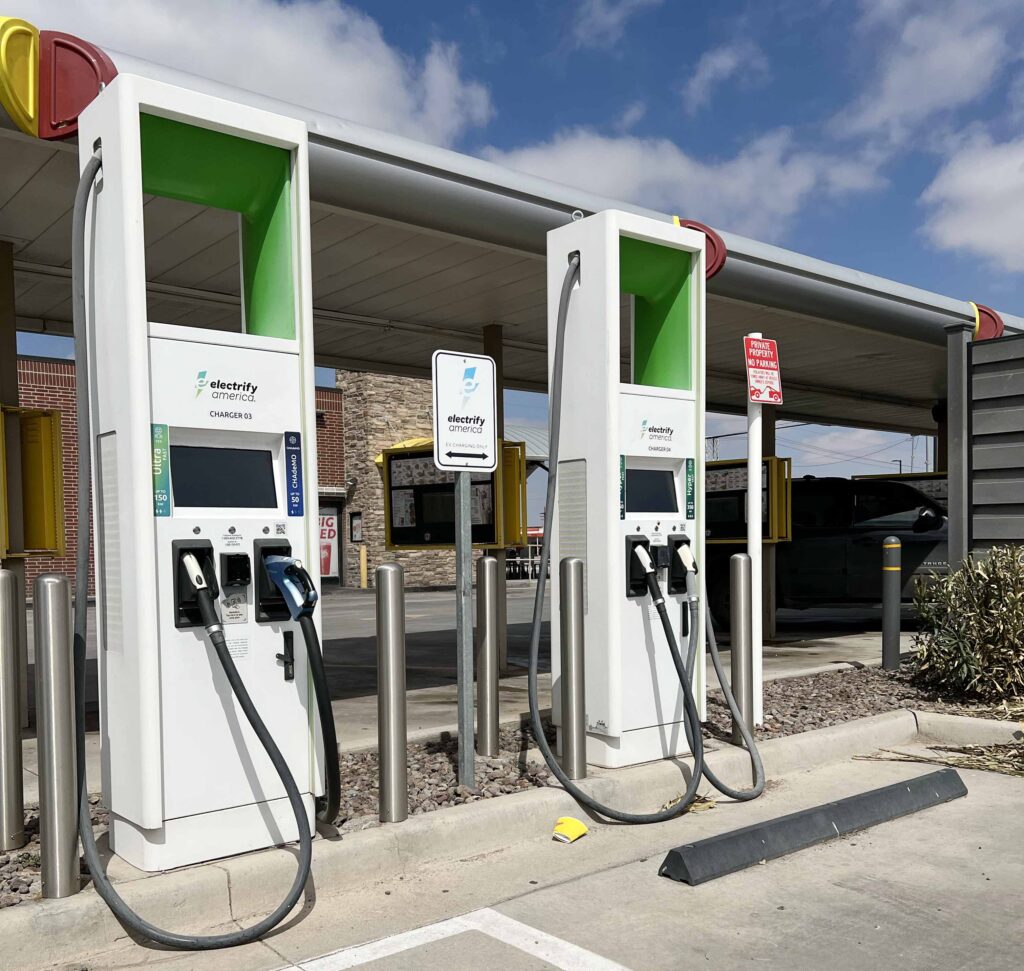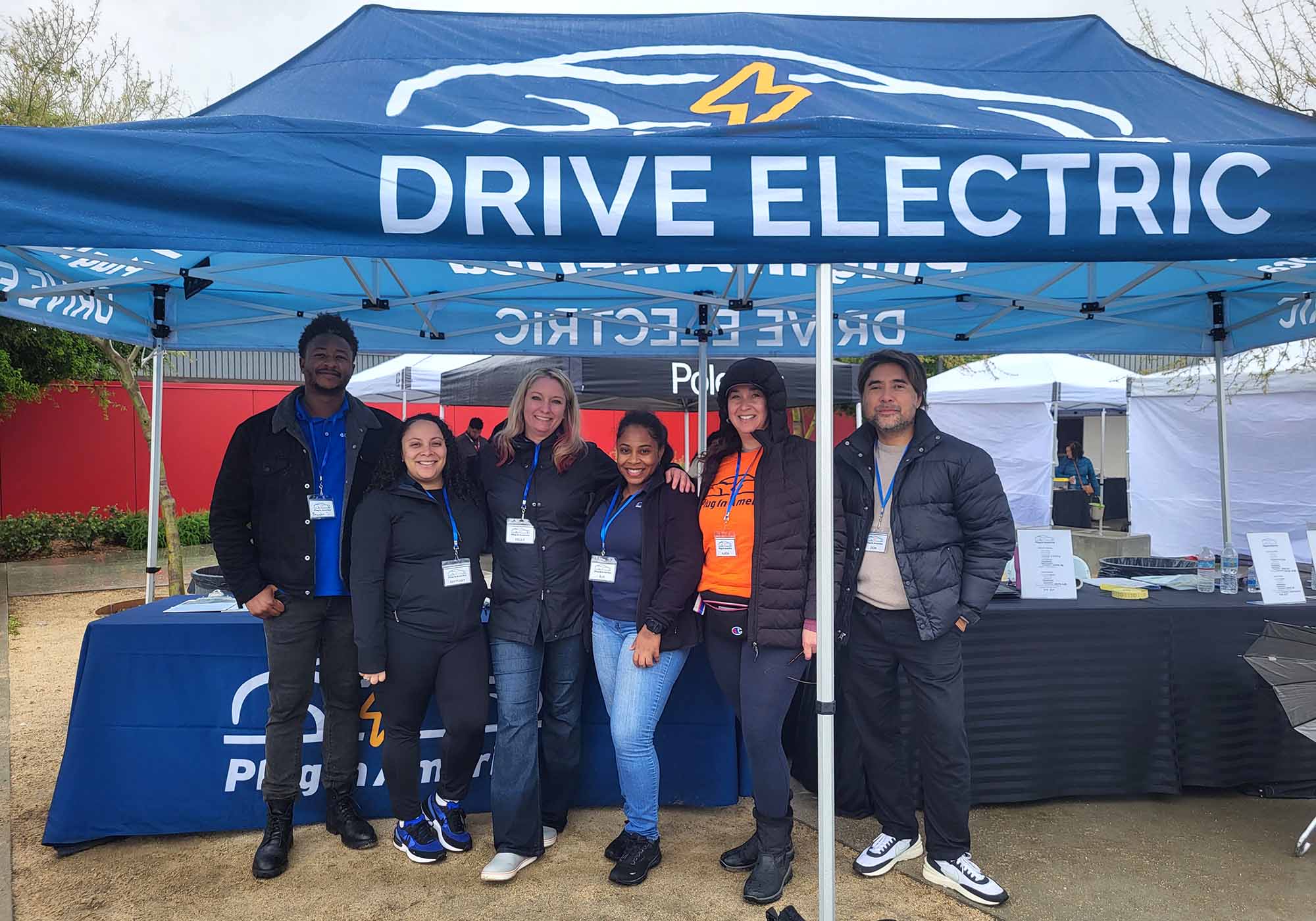While it can be scary to try something new, there’s some comfort in knowing you’re not the first person to take a road trip across the U.S. in an EV. In fact, people have been doing it for more than 10 years. If you have any anxiety, just take a deep breath and give yourself some credit for researching this topic in the first place.
We asked EV drivers across the country and our staff for their best tips to compile this comprehensive resource for first-time EV road-trippers and those interested in learning how the experience differs from gasoline-powered cars.
Before you leave
Download and set up your planning and charging apps.
In addition to using their vehicle’s navigation system, EV drivers swear by A Better Route Planner (ABRP), which you can use on a browser or download as an app on your phone. As the name suggests, ABRP creates a route for you based on your vehicle’s make and model, starting state of charge, and charging station preferences. It is a robust tool that every EV driver should have in their arsenal, especially since it is free.
PlugShare is another beloved app. Like ABRP, it can also be accessed by a browser. PlugShare provides information about plug compatibility, but its superpower lies in its ability to provide information in real time about whether chargers are working properly. It is crowd-sourced similar to Waze, and users leave reviews, photos and comments about their experience at the charger.
Google Maps has also improved and often does the trick for finding charging along your route, according to some drivers, while PlugShare confirms chargers’ functionality.
You’ll also need to download apps from the major charging networks, depending on which ones you’ll visit. A few of these are Electrify America (not to be confused with us, Plug In America), EVgo, and ChargePoint. Get your method of payment set up, so you don’t have to do it on the fly. That way, a weak internet connection won’t frustrate you on the road.
One tip from our staff: If you’re looking for a charger in a specific location, you can double-check the charging network apps, as it may take some time for their newer chargers to show up on PlugShare.
Plan out your route.
Using your car’s navigation system, A Better Route Planner, or Google Maps, chart out your drive and look at the possible charger options. Keep in mind that weather and road conditions may cause you to charge sooner or be able to go farther, just like in a gas-powered vehicle. Conditions that mean you might need to charge earlier in your journey include freezing temperatures, a strong headwind, and climbing elevations. Conversely, temperate weather, a tailwind, and downhill driving may propel you further on a single charge.
We recommend charging when your battery reaches a state of charge of roughly 20%. That way you will have a cushion in case of emergencies.
Book a place to stay with charging if possible.
This could be Level 1 charging at a friend’s place, Level 2 charging at a hotel or short-term rental, or an EV-friendly campground you can plug into with an adapter. Charging where you stay overnight lets you save time and money. Plus, it’s always great to wake up to a full charge. However, it’s completely doable to road trip in an EV if you don’t stay at a place with an outlet. Many of our staff, board, and supporters have done it.

Call the day before to check the status of your accommodations’ chargers.
Since chargers are used frequently, sometimes they break. If there’s no recent info on PlugShare about the chargers at your lodging, consider calling to find out if all chargers are working. That way you’ll know in advance if you need to consider other charging options before you arrive.
Get any adapters that you might need
If you drive a non-Tesla and your manufacturer now offers access to the Tesla charging network, try to get an adapter before your trip. The ability to access the Tesla network will give you a lot more options on the road.
Start your trip with a full battery.
For those who have access to a home charger, leaving your home with a 90% to 95% state of charge gets your trip started on the right foot.
On the road
Monitor your speed.
If you follow the speed limit, keep doing that. If you fudge the speed limit, be aware that driving at higher speeds reduces your available range—just like it does in a gas car.
If you ever find yourself low on range, the number one thing you can do is slow down to make it to your destination. Turning off the air conditioning or heat will not save you significant range; driving slower will.
While driving, only charge up to 80% or whatever is needed to get to the next charger.
Don’t try to charge to 100% if you’re fast charging. The last 20% takes a long time and isn’t worth the wait, just like with cellphone batteries. When you pour water in a glass, you start off with a rush of water into the glass and slow to a trickle by the end. Charging an EV is similar, which means charging the last 20% of the battery takes a lot longer. If you plug in at an overnight stop or a longer daytime stop on Level 1 or 2 charging, that’s when it makes more sense to charge to 95%.
For those who think in terms of miles, here’s how this translates: If your vehicle has an EPA range of 300 miles, expect to stop around every 200 miles. Remember, you are only charging to 80% and probably don’t want to get close to zero.
This may be one of the largest adjustments in the transition from a gas car to an EV. Some drivers prefer to stop more often, drive faster, and then spend less time at each station. Others like to get to 80% and go longer in between stops. You’ll find out your preference once you’re on the road.
Pay attention to the weather.
You may notice your battery is losing charge slower than you expected if you’re driving with the assistance of a tailwind. The opposite is also true–you may need to make one more charging stop if you’re driving into the wind or other weather system. This applies to EVs just like gas cars.
Consider grabbing food before or while you stop to charge.
If the charger isn’t by any restaurants or eateries you prefer, use a drive-through en route so you can eat in your car. If sit-down restaurants are near the fast charger, you may decide to charge longer before you “fill up” your car again.
Know how fast your car actually can charge using a fast charger.
You’ll want to know your max charge rate based on vehicle capability. For example, most Chevy Bolts cannot take advantage of the faster charger rates of many Electrify America charging ports. The Bolt’s max charge rate is 55 kW, while Electrify America’s ports are 150 kW or 350 kW.
As a result, as a courtesy, you should go to chargers that best match your onboard rate for the most efficient use of resources for everyone. That said, in a pinch, it’s understandable if you’re running close to 0% and the only open charger is a 150 kW station.

Look at charging breaks with an open mind.
Many drivers have reported that charging breaks help split up the drive and make it more enjoyable. You have to stop anyway to use the restroom or eat. Depending on the charger’s speed, your vehicle might be done charging before you’re finished eating.
If it’s still going, some people find they like to have a few extra minutes to stretch a bit, meditate, or take a short walk. Others like to talk to other drivers if they are around to get tips or learn about other vehicles. The journey can be part of the adventure.
Have a backup plan.
Some of us are planners at heart, which means we prefer to know what our options are if a hotel charger is broken or the outlet at the Airbnb is too far away. That way, an unexpected circumstance is a minor inconvenience rather than a crisis.
Charging etiquette
Avoid leaving your car plugged in after it’s reached its maximum charge.
You would hate to arrive at your hotel at midnight to find a car that’s fully charged, occupying the charger you were counting on. Some people leave hang tags on the charging cable with a phone number so others have a way to contact them if someone needs to charge. Also, many fast chargers will charge you extra for idling in charging spots.
Don’t use a charging spot as a parking spot.
EV charging spots are for active charging, not special parking. In some places, you can even get ticketed for parking in a designated charging spot. When you’re done charging, move your vehicle, so other EV drivers can top up.
Don’t park on the lines in a charging parking spot.
Some of us are less gifted in parking skills, so do your best to park straight and within the lines when you get to a charger. You can make it hard or impossible for others to charge at an open charger if you’re taking up more space than allotted.
Leave the station tidy.
This includes putting trash in trash cans rather than littering, as well as putting the connector cable in its holster.
Contact support if a charging port is broken.
Charging companies can’t fix something if they don’t know about it. You can do this during downtime after you start your charging session.
You’ve got it
If you’re feeling overwhelmed, take a deep breath. It’s common for first-time EV roadtrippers to be nervous. After the first trip or two, we often hear that drivers love driving across the country in their EVs. While it can be scary to do anything for the first time, it can also be exciting–revel in that!


